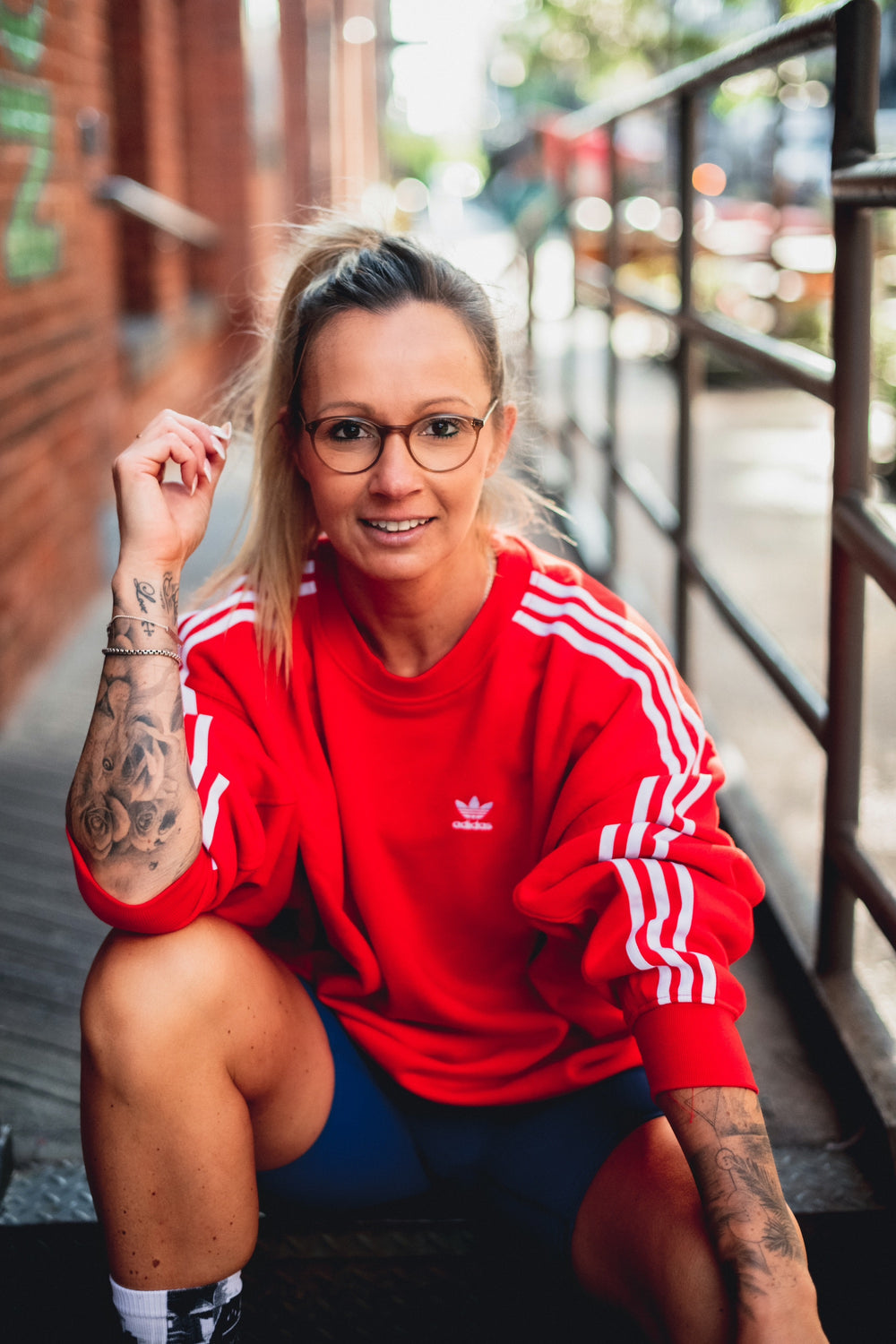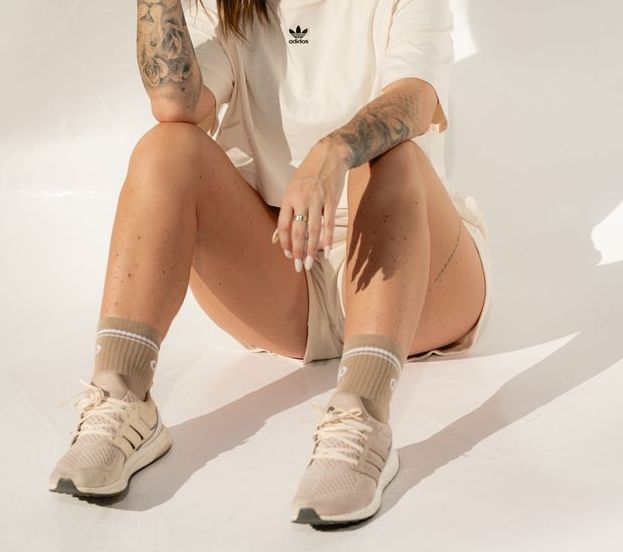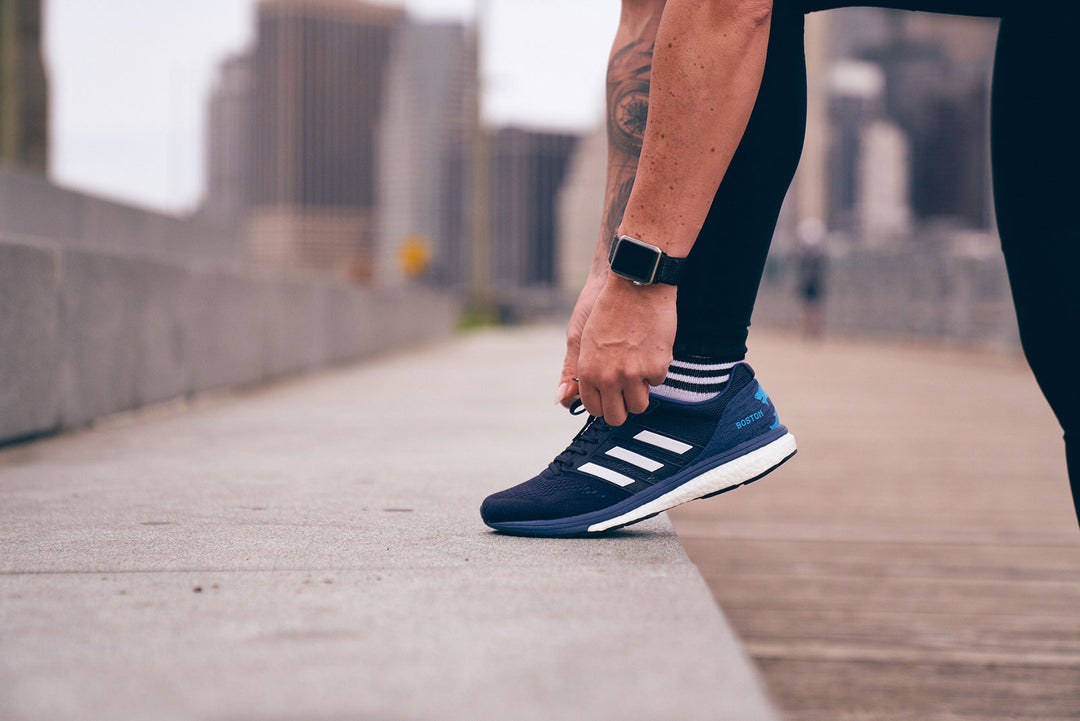The Best Running Shoes in 2024
Last Updated:
- Most featured running blog, past 6 years
- USATF certified running coach
- Experienced endurance athlete
- 7 marathons
Runners spend the most time on their feet, so a solid foundation is important. Quality running shoes can help you reach your peak performance as a runner, but there are lots of factors to consider when choosing the right pair. The right pair of running shoes will offer the support you need, and an even better pair will also complement your style (because, hey, who says we can’t look good while we run?!).
As someone who’s been running for 10 years, I couldn’t tell you how many shoes I’ve gone through — but I can tell you how many shoes I’ve kept. To save you time and money, I’ve rounded up the four things you should look for in your next pair of running shoes:
- Consider your running terrain: A rocky trail will need different running support than a smooth race track. That’s why where you run is just as important as how you run. There are shoes for roadrunners, trail runners, and cross-trainers. You may find that you need different running shoes for different environments (since you wouldn’t want to mess up your road running shoes on a bumpy trail, for example).
- Decide on how much cushion you want: Your shoe’s cushion will change the way your foot interacts with the ground. Lots of cushions can make your feet feel like you’re running on a cloud, almost bouncing. Less cushion can allow you to feel the ground beneath you, offering more of a grounded running experience.
- Understand the specific support you need: Are you flat-footed? Does your foot tend to lean to one side? These are both things you should consider when testing out a new running shoe. The best shoe will complement your gait, allowing you to feel supported and aligned.
- Make sure the shoe fits comfortably: If the shoe fits, wear it – and run! Unlike a stiletto with a wobbly heel or those blister-causing flats, running shoes should not come with any asterisks. Finding a comfortable shoe can allow you to focus on reaching your running goals without any distractions.
The 5 Best Running Shoes
The Best All-Around: Adidas SL 20.3 Running Shoes
The Best Road Runner: Adizero Adios Pro 3 Running Shoes
The Best Trail Runner: Terrex Agravic Flow 2.0
The Best Cross Trainer: HOKA One Bondi 7
The Best Neutral Shoes: HOKA One Clifton 8
The Best Stability Shoes: Asics Gel Kayano 28
To help you even further, I broke down each of the categories below so you know exactly what to look for in your next pair of running shoes. The next time you step into a shoe store, ask yourself these four questions.
- Where do I plan to run?
There are generally three types of running shoes, each designed for different running terrains.
Roadrunners: Road running shoes are designed for pavements or packed surfaces with little to no irregularities. They’re made to keep you cushioned and stabilized as you stride on hard, even surfaces. These shoes are best for those who run on a sidewalk, road, track, or treadmill.
Trailrunners: Trail running shoes are designed for off-road routes that may be rocky, muddy, and mostly uneven. They have bigger “cleats” than road running shoes to stabilize you on unpredictable terrain. Some pairs have a plate underfoot to help protect you from sharp objects. They’re also generally stiffer in the midsole, offering even more support as you run.
Cross trainers: Cross trainers are designed for the gym, cross-training workouts, and/or any balancing activity where having more contact with the ground is preferred over cushiony support.
- How much cushion do I want?
When it comes to shoe cushioning, there are two things to consider: the thickness of the foam and the firmness. Some runners want the soft plush feel of a thicker, softer foam, while others would prefer a thinner, harder foam for more support. The best way to decide how much cushion to get is to try on a few different pairs.
Maximum cushion: Maximum cushion offers the thickest padding in the midsoles of the shoe for a comfortable, plush feel. You may prefer this squishier foam if you’re running long distances or on consecutive races.
Moderate cushion: Shoes with moderate cushion offer the plushness of a pillow-soft shoe, with a closer-to-the-ground kind of feel. Most running shoes fall in this category.
Minimal cushion: Shoes with minimal amounts of cushioning at the midsoles are best for runners who want to feel the ground beneath them as they run.
Barefoot shoes: These shoes are the closest to being barefoot. They have no cushion or a very thin layer, providing little to no arch support or stability.
- What support do I need?
Once you’ve decided how much cushioning you want and where you plan to run, you need to consider what kind of support you need. In general, there are three categories of running shoe support: neutral, stability, and motion control.
Neutral running shoes: Neutral running shoes provide the right amount of support for runners who don’t overpronate, which is when the ankle rolls too far inward when running, or supinate, which is when the ankle rolls too far outward.
Stability shoes: Stability shoes are for flat-footed runners or runners who overpronate. They are designed with extra support in the midsole to help keep your foot in a neutral position.
Motion control shoes: These are the most stable running shoes for support with overpronation. Though more likely to be carried in a specialty running store, these shoes include a denser foam that supports the midsole and heel of your foot.
- Do they fit?
Alas, we have made it to the final question. How can you find the right shoe fit? Well, you follow these five steps.
Measure your feet: Your foot changes over time, so you’ll want to measure it every now and then for your current size.
Aim for a thumbnail’s length of space in the toe box: You should have just a little bit of space between your toe and the shoe, just in case your foot slips forward as you run.
Try on both shoes: One foot might be bigger than the other, and the right pair of shoes should feel good on both feet.
Make sure they’re comfortable from the start: Your running time is not the time to break in your new shoes. Running shoes should be comfortable from the second you slide them on (remember, no distractions!).
Be aware of the brand fits: Some brands (and I’m looking at you, Converse), run small or big, so it’s important to actually try on your shoes in the store. Don’t just add them to the cart because they’re “your size.”









